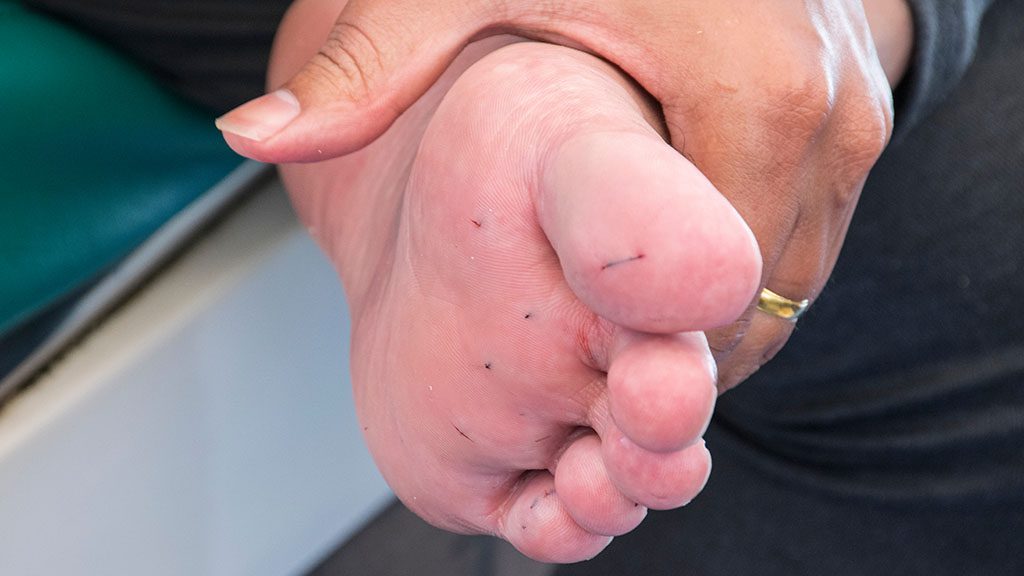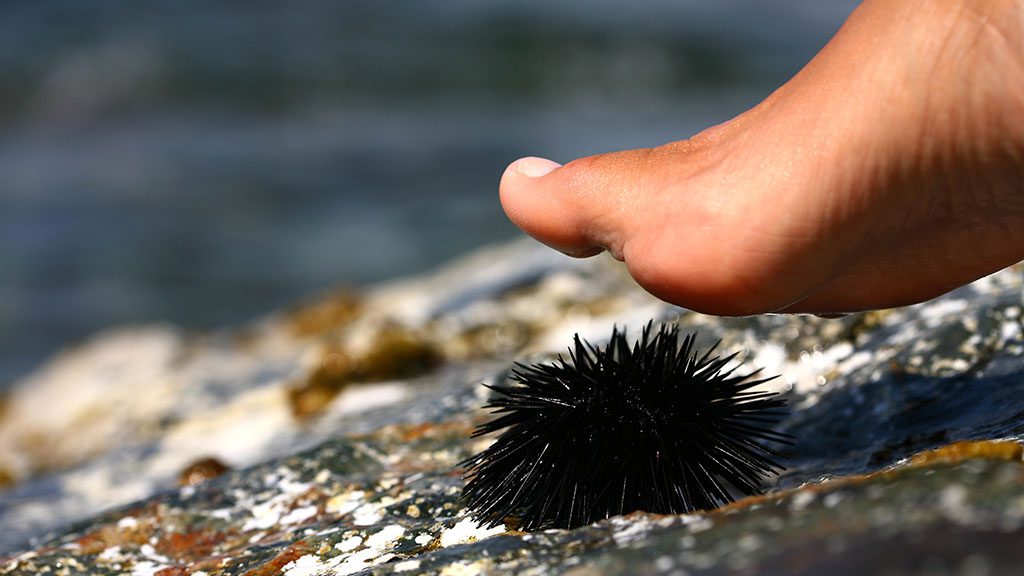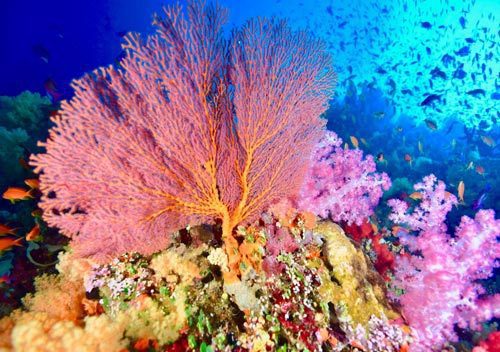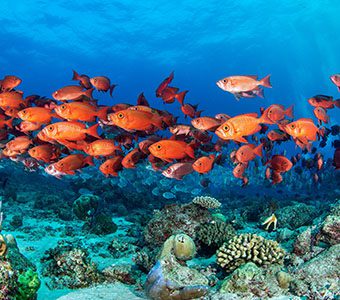Ask DAN: How do you treat sea urchin stings?
While on a recent trip to Hawaii, I was swimming off the beach and stepped on sea urchin. I had one large puncture in the area between the big toe and the ball of my left foot and a few smaller ones on my right foot. Initially, my left foot was bleeding, and my right foot was a little painful. As advised by a local lifeguard, I have been soaking my feet in hot water and vinegar. All the black marks are completely gone, but yesterday my left big toe started to become slightly swollen and itchy with no redness or feeling of heat. I can walk but have a noticeable limp, and I have a limited range of motion with my left big toe due to minor swelling. Is this a normal part of the healing process?
Unfortunately, sea urchin puncture wounds are known for being problematic, particularly when involving toes or small joints. When a sea urchin spine puncture involves a joint, promptly seek medical attention at the time of injury. Hot-water immersions might help with the pain but will not be a long-term or definitive solution. Vinegar soaks are known to be a good first aid treatment for jellyfish stings and injuries from other cnidarians but are not useful with sea urchin punctures, which don’t involve cnidocytes.
The minor swelling and limited range of motion of the big toe indicate inflammation, a retained foreign body or an infection. With time an infection might evolve into a granuloma (a mass of immune cells trying to wall off an infection or a foreign body), which will feel like a puffy, firm, red and painful lump. A granuloma that is restricted to the soft tissues typically responds well to antibiotics and corticosteroids, but surgical drainage of that pus may be needed if the granuloma affects a joint space or tendons, particularly when it contains a foreign body that cannot be dissolved or naturally expelled. These chronic inflammatory processes can lead to fibrosis that can limit range of motion. In those cases, physical therapy can be useful as the treatment itself to minimise fibrosis and restore the range of motion in the affected joint(s).

Unbearable pain while in motion usually suggests that the sea urchin spine has reached a joint. A spine puncture that reaches tendons of the hands and feet can cause tenosynovitis, which is inflammation of the tendons and the fluid-filled sheath that surrounds the tendon. Those cases usually require professional surgical intervention. Neglecting this inflammation could result in permanent damage to the affected joint.
Sea urchin spines are covered by a thin layer of tissues, which appears as a strong pigment in some species. These tissues and pigments are an antigenic mosaic that stimulates a strong immune and inflammatory reaction. This is the reason why many sea urchin puncture wounds can have a torpid evolution that perpetuates for months after the puncture. Time, patience, anti-inflammatories and physical therapy are the key elements for long-term success. World.DAN.org






